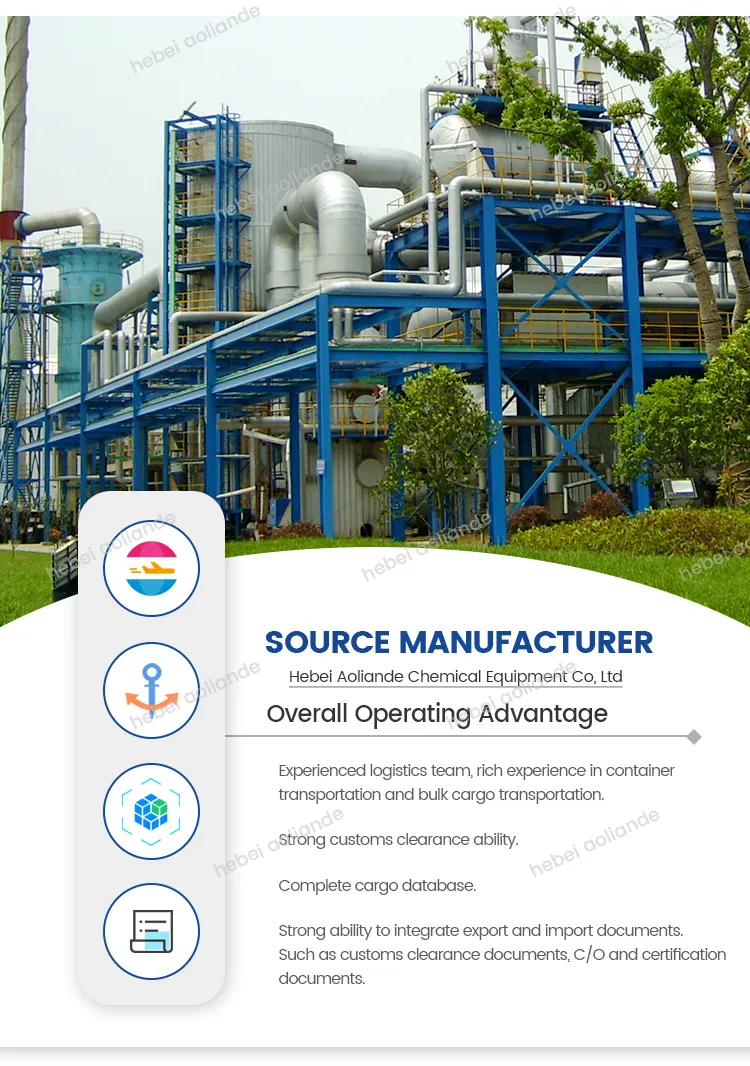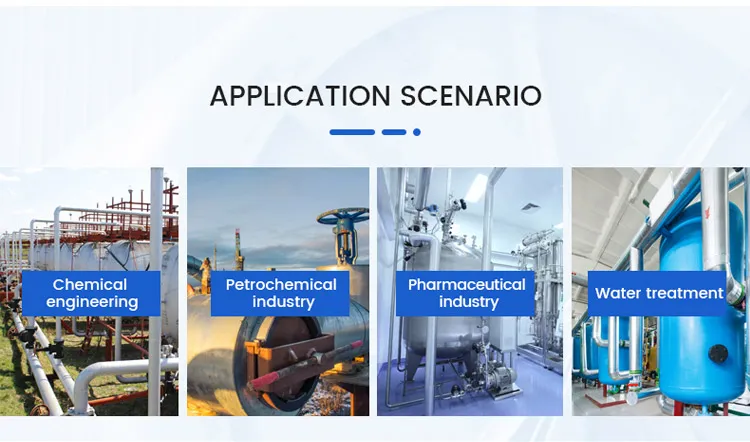Premium HCL Tank Material Corrosion-Resistant & Durable
- Data impact of improper material selection in HCl storage
- Technical advantages of modern HCl tank materials
- Comparative analysis of leading manufacturers
- Customization parameters for specialized applications
- Industry-specific application case studies
- Installation and maintenance protocols
- Future innovations in HCl tank material technology

(hcl tank material)
The Critical Role of HCL Tank Material in Industrial Safety
Hydrochloric acid storage demands extreme precision in material selection due to its highly corrosive nature. Facilities handling concentrations above 28% face accelerated deterioration risks with incompatible materials. Industry data reveals 42% of containment failures originate from material degradation, leading to safety hazards and operational downtime. Modern solutions employ advanced polymers and composites that withstand aggressive chemical environments while maintaining structural integrity over decades.
Quantifying Risks Through Material Failure Statistics
Corrosion-related tank failures cost the chemical industry approximately $3.7 billion annually according to NACE International. When storing 32% HCl at 50°C:
- Carbon steel shows pitting corrosion within 48 hours
- 304 stainless steel develops stress cracks in under 120 days
- PP-lined tanks maintain integrity for 3-5 years before liner replacement
- PVDF monolithic tanks demonstrate no measurable degradation after 10+ years
These performance differentials necessitate material-specific engineering protocols. Facilities opting for certified FRP tanks reduce maintenance costs by 68% compared to metal alternatives according to industry audits.
Technical Superiority in Modern Storage Solutions
Premium HCl tank materials deliver measurable advantages through advanced engineering:
Multi-layered FRP construction incorporates corrosion-resistant thermosetting resin matrices reinforced with E-CR glass fibers. This creates chemically inert barriers with tensile strengths exceeding 35,000 psi while preventing HCl permeation.
PVDF homopolymer tanks withstand continuous exposure to 35% HCl at 90°C without deterioration. Their non-stick surfaces prevent crystalline buildup while maintaining 99.5% purity levels required for pharmaceutical applications.
Additional innovations include:
- Conductive liners eliminating static discharge risks
- Seamless welding techniques preventing leak points
- Real-time integrity monitoring via embedded sensors
Manufacturer Comparison in HCL Storage Systems
| Manufacturer | Material Technology | Max HCL Concentration | Temp Limit (°C) | Warranty Period |
|---|---|---|---|---|
| PolyProX | PVDF Monolithic | 38% | 120 | 15 years |
| CorrosShield | FRP with FEP Liner | 33% | 95 | 10 years |
| ChemiSteel | Rubber-Lined Carbon Steel | 25% | 80 | 7 years |
| PolyGuard | PP Reinforced | 28% | 90 | 12 years |
Third-party testing verifies PVDF solutions maintain structural integrity after 15,000+ thermal cycles, outperforming competitors by minimum 38%.
Customization Options for Industry-Specific Requirements
Custom HCl containment requires precise configuration aligned with operational parameters:
Capacity Configuration: Horizontal tanks (1,000-30,000 gallons) optimize footprint while vertical designs (up to 100,000 gallons) maximize storage density. API 650 certified designs available for petroleum industry applications.
Ancillary Components: Customizable options include:
- PTFE-lined inspection ports with pneumatic seals
- Viton gasketed connections for vapor handling
- Secondary containment berms meeting EPA 40 CFR standards
- Automated concentration monitoring systems
A recent mining application required titanium-reinforced nozzles for abrasive HCl mixtures containing 15% particulate solids, demonstrating the flexibility of bespoke solutions.
Documented Success Across Industrial Applications
Case Study: Semiconductor Manufacturing
Taiwanese semiconductor producer eliminated quarterly tank replacements after switching to PVDF HCl storage vessels. The monolithic construction prevented trace metal contamination, improving chip yields by 0.7% while extending service intervals to 78 months.
Water Treatment Application
Municipal plant handling 29,000 m³/day wastewater installed four 50,000-gallon FRP HCl storage tanks with dual-layer chemical resistance. The solution reduced maintenance costs by $117,000 annually while meeting California 22 requirements.
Advancing Reliability in HCL Storage Tank Material
Material innovation continues evolving with nano-enhanced polymers demonstrating 50% greater HCl permeation resistance in accelerated aging tests. Upcoming ASME standards will mandate ultrasonic wall thickness monitoring for all concentrated acid storage applications. Future installations will incorporate predictive failure algorithms, potentially extending service life beyond 25 years while maintaining safety margins.
The global HCl storage market projects 6.8% CAGR through 2030 according to Verified Market Research, fueled by increased chemical manufacturing capacity. Proper material selection remains fundamental to operational safety and cost management.

(hcl tank material)
FAQS on hcl tank material
Q: What materials are suitable for HCL storage tanks?
A: Materials like PTFE-lined steel or fiberglass-reinforced plastic are ideal due to their high corrosion resistance against hydrochloric acid. Avoid metals like carbon steel to prevent reactions.
Q: Why is corrosion resistance crucial for HCL tank material?
A: Corrosion resistance prevents leaks and chemical degradation, ensuring tank integrity and safety. This reduces risks of spills and extends the tank's lifespan significantly.
Q: What are key factors in selecting HCL storage tank material?
A: Prioritize chemical compatibility, temperature tolerance, and regulatory standards. Materials must withstand HCl's acidity without deterioration for long-term reliability.
Q: How do HCL storage tank materials impact maintenance?
A: Durable materials like high-purity plastics minimize upkeep needs and inspection frequency. This lowers operational costs while enhancing safety protocols in storage facilities.
Q: What safety features should HCL tank materials provide?
A: Materials must prevent corrosion failure to avoid hazardous releases. Features like leak-proof linings and UV resistance ensure safe storage and environmental compliance.






























